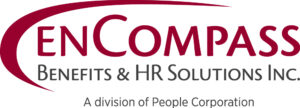Some brand drug manufacturers provide a discount allowing the pharmacist to dispense the brand drug but at generic pricing – resulting in (sometimes significant) cost saving. These Patient Assistance Drug Programs are becoming more common.
As an example, SINGULAIR is a brand drug prescribed to prevent the symptoms of asthma and allergies and Lipitor treats Cholesterol – both offer Patient Assistance Programs.
Why does the brand drug manufacturer offer this discount?
Brand drug manufacturers want to keep their market share vs. losing customers to their generic competitors and are willing to lower their profit margins between the generic and brand drug.
What does this mean to you and your approach to minimizing plan costs?
- As standard practice, pharmacists typically prescribe a generic drug if one is available. This is also a requirement of B.C. Pharmacare. However, it never hurts to reconfirm.
- If your prescription must be a brand drug (as per Dr.’s instructions), then ask your Dr. and/or your pharmacist if there is a Manufacturer’s Patient Assistance program so you can receive the brand drug at generic pricing.
- The brand manufacturers discount only applies to some brand drugs and is only available through some brand drug manufacturers. While you won’t likely know which brand has a discount, your pharmacist does.
- By simply asking questions, employers and consumers can save significant costs.
Learn More
- Rxhelp.ca – for a comprehensive list of available Patient Assistance Programs including Merck, Pfizer, and Lilly
- Brand Name Drugs vs. Generic Drugs: What’s the difference?
An Example
Recently, one of our staff went to the pharmacist to fill a prescription.
With our ENCOMPASS benefits plan, we have co-insurance for prescription drugs meaning that 80% of the costs are paid by extended health and 20% is paid out-of-pocket by the employee. Our plan also includes reimbursement for the ‘lowest cost alternative’ meaning that if a generic drug is available, then we are prescribed the generic drug vs. a brand name drug (brand name drugs can be prescribed / covered if required). It was a surprise when the staff member’s costs were higher than the applicable 20% co-insurance.
Working daily in the employee benefits industry, the staff member had the knowledge to ask the pharmacist for more knowledge on the prescription….was this a brand? was there a generic available? and why didn’t we get the generic if there was one?
As it turns out it was a brand that was dispensed, and the plan only covered the generic pricing but passed the additional cost to the consumer. When pressed on these questions…the pharmacist keyed in a code, or clicked an ISBN bar and “magically” the pricing was reduced providing a credit. The pharmacist said “there you go, we fixed it for you; you now received the generic pricing.”
Our informed staff member asked again for a better explanation as to what happened? The Pharmacist confirmed that some brand manufacturers provide a discount allowing the pharmacist to dispense the brand drug but at generic pricing – resulting in (sometimes significant) cost saving. In this case, it was only because they were questioned as to the amount / percent that was not covered.
We need to continue ensuring our employees are aware of these details to minimize their costs and your costs for prescription drugs and your group benefits plan.
Please contact us if you would like a copy of an employee memo that you can send to your workforce to educate them on this topic.


